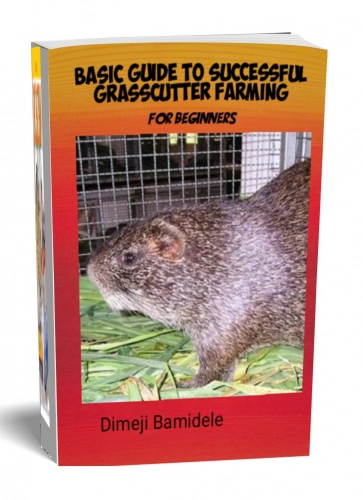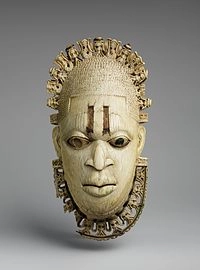ReligionNews And PoliticsLifetipsRelationshipsNewsBusiness And MoneyHistoryComedyMotivationalsRelationship And MarriageCelebrityStoriesHealth And LifestylePoliticsMotivationEducationLawFamilySports And FitnessHealthCommunications And EntertainmentIT And Computer SciencePrinciplesAnimalsLifestyleScience And TechnologyNatureOthersKitchenMenPoemsGeneralAgricultureMarriageQuestions And AnswersQuestions AnsweredSocial SciencesSecuritySportsSpiritualityArtsVehicles And MobilityGive HelpHandiworksChildrenScience
Gale2626
Business Person : I'm A Town Planner By Qualification, Self Employed And A Blog Writer, Love Esthetics, Reading And Sports. And I'm Also Single In Case You Crush On Me, Just Say It...
Wants to meet A Spouse : Open To Meeting New Friends And Someone Special To Be With
Articles
396
Followers
60
Connect with me
profile/8055FB_IMG_15961823052589134.jpg
Gale2626

Grasscutter Farming, A Lucrative Business
~0.9 mins read
Grasscutters are one of the most profitable mini-livestock that you can produce; they can get most or all of their food from eating grass. There’s a huge demand for them. Last year alone, grasscutters worth millions of naira were grown and sold. Not only is the demand high, but crossbreed grasscutters are very easy to raise. They grow fast and take about six months from start to reproduction time, and no full-time commitment is necessary.
You can still have a full-time job or other commitment and be a successful grasscutter farmer. If you have a few hours a week to spare, then you have enough time to produce grasscutters for huge profit.
So what kind of money can you make? Grasscutters are currently selling for about $10 to $15 per Kg in the international market and N2000 to N2500 per Kg locally. Fully grown grasscutter can weigh up to 5kg. A room space can produce, on average, 1000kg in a year. That’s around $10,000, or $15,000 or N2, 000,000 a year. Need more money? Expand the growing area to produce more grasscutters. Growing crossbreed grasscutters for profit is certainly not a get-rich-quick scheme, but you can make a nice income. So how do you get started in grasscutter farming?
To order for the e-book above, contact me through WhatsApp:+2348130040244
profile/8055FB_IMG_15961823052589134.jpg
Gale2626

The Big Mistake Ekiti State Government Should Not Make
~4.7 mins read
Festac '77, also known as the Second World Black and African Festival of Arts and Culture (the first was in Dakar, 1966), was a major international festival held in Lagos, Nigeria, from 15 January 1977 to 12 February 1977. The month-long event celebrated African culture and showcased to the world African music, fine art, literature, drama, dance and religion. About 16,000 participants, representing 56 African nations and countries of the African Diaspora, performed at the event. Artists who performed at the festival included Stevie Wonder from United States, Gilberto Gil from Brazil, Bembeya Jazz National from Guinea, Mighty Sparrow from Trinidad and Tobago, Les Ballets Africains, South African Miriam Makeba, and Franco Luambo Makiadi. At the time it was held, it was the largest pan-African gathering to ever take place.

A replica of this ivory mask was used as a symbol for Festac '77.
The official emblem of the festival was a replica crafted by Erhabor Emokpae of the royal ivory mask of Benin. The hosting of the festival led to the establishment of the Nigerian National Council of Arts and Culture, Festac Village and the National Theatre, Iganmu, Lagos. Most of the events were held in four main venues: the National Theatre, National Stadium, Surulere, Lagos City Hall and Tafawa Balewa Square.
Following the successful completion of the festival, the artifacts of the 59 countries and communities were kept in trust by Nigeria, the host country. This prompted the establishment of the Center for Black and African Arts and Civilization (CBAAC), a federal parastatal with offices in Marina, Lagos and FCT, Abuja. Monuments of the festival are currently being preserved in a museum at the Center.
The archive of the USA contingent's participation is owned and maintained by photographer Marilyn Nance, the official photographer for FESTAC 77's North American Zone (NAZ). A two-time finalist for the W. Eugene Smith Award in Humanistic Photography, Nance is probably most well known for her complete documentation of FESTAC 77, the Second World Festival of Black and African Arts and Culture held in Lagos, Nigeria.
An exhibition curated by Theaster Gates and Romi Crawford featured a wealth of photographs, some never publicly seen, from Chicago-based photographer Karega Kofi Moyo. The exhibition, K. Kofi Moyo and FESTAC ’77: The Activation of a Black Archive, was on view at the University of Chicago's Logan Center for the Arts exhibition gallery February 12 - March 21, 2021. The exhibition grew from the research conducted during a Richard and Mary L. Gray Center Mellon Fellowship by Gates and Crawford. One big notable aftermath which most of us failed to note is God turned His back on Nigeria from that very moment our nation decided to celebrate idols for a show of our liberty rather than the Almighty God that brought us out of slavery and blesses us with great riches. My advice to Ekiti State government is, let us learn from the past most stakes of the Israelite and Nigeria as a failing Nation. The problems of Nigeria is not economical, if it were I am confident our able leaders would have solved it long ago but God Himself is the one punishing us for idolatry and He is also ready to have mercy but He is warning Ekiti people. Please let us pray for our leaders! both at state level and National, this hard time will surely come to an end. Daniel 2:21
Advertisement

Link socials
Matches
Loading...
